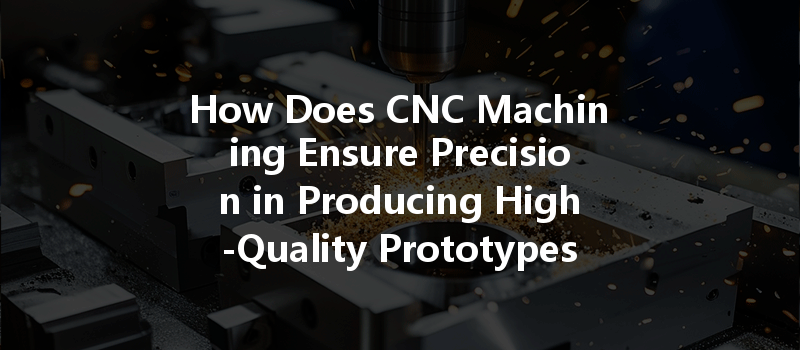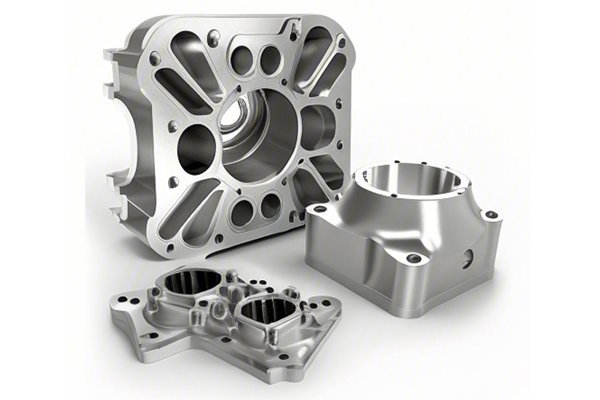—
Opening
Did you know that CNC (Computer Numerical Control) machining has revolutionized manufacturing, making it possible to achieve tolerances as tight as ±0.001 inches? This astounding level of precision not only promotes efficiency but also greatly enhances the quality of prototypes and finished parts across various industries. As businesses race to meet the demands of rapid prototyping and high-quality production, understanding how CNC machining guarantees accuracy and consistency becomes increasingly critical.
In this blog, we will explore the core technologies and methodologies employed in CNC machining that ensure precise and high-quality outputs, examining how they contribute to the manufacturing of prototypes and parts.
Understanding CNC Machining
CNC machining is a subtractive manufacturing process where computer-controlled machine tools remove material from a workpiece to create finely detailed and complex shapes. Modern CNC machines come equipped with advanced technology and software, enabling them to perform intricate designs with incredible precision. The significant components that contribute to CNC precision include:
Factors Ensuring Precision in CNC Machining
The selection of appropriate materials is crucial for achieving desired precision levels. CNC machining can work with a variety of materials, including metals, plastics, and composites. Each material presents unique challenges concerning machinability, stability, and tolerance levels. Using high-quality materials minimizes defects and enhances the final product’s durability.
Example: In aerospace applications, the use of materials like titanium and aluminum alloys ensures that the prototypes not only meet stringent tolerances but also exhibit high strength-to-weight ratios necessary for performance.
The precision of the tools used in CNC machining plays a pivotal role. Tooling must match the specifications of the parts being manufactured. High-quality cutting tools with optimal geometries reduce wear and improve performance, ensuring that tolerances are maintained throughout the machining process.
Most modern CNC machines feature multi-axis capabilities (typically 3, 4, or 5 axes), allowing for intricate part geometries and complex features to be machined in a single setup. This reduces the need for multiple setups and mitigates the risk of cumulative errors often encountered in traditional methods.
Making use of technologies such as real-time monitoring and feedback systems can significantly enhance precision. Techniques like in-process measurement and automated adjustments can correct errors during machining, preventing defects before they occur.

Even after machining, additional processes like finishing, coating, or heat treatment can enhance the precision and quality of CNC machined parts. These processes include polishing, anodizing, or machining to achieve finer surface finishes and improved mechanical properties.
Challenges and Solutions in Achieving CNC Precision
Despite its advantages, CNC machining presents challenges that can compromise precision. Here are common challenges along with effective solutions:
Challenge: Material defects such as inclusions or inconsistencies can affect machining outcomes.
Solution: Rigorous material inspection and quality checks prior to machining help identify defects early. Utilizing certified suppliers and conducting material certifications can minimize this risk.
Challenge: During machining, heat generated can cause thermal expansion, leading to dimensional inaccuracies.
Solution: Employing cooling systems (e.g., coolant fluids or air blasts) helps maintain temperature stability and reduce thermal deformation, promoting consistent results.
Challenge: Vibrations during machining can lead to decreased part quality, while tool wear can affect cutting precision.
Solution: Proper machine setup, appropriate tool selection, and regular maintenance schedules can mitigate vibration and wear, resulting in consistently high-quality parts.
Challenge: Miscalculations or errors in manual setups can lead to inaccuracies.
Solution: Implementing automated CNC programming and using simulation software to evaluate machining processes can reduce human error and improve overall accuracy.
In summary, CNC machining is a powerful technological advancement that ensures the production of high-quality, precise prototypes and parts across various applications. By understanding and implementing best practices in material selection, tooling, multi-axis capabilities, monitoring technologies, and post-processing, manufacturers can significantly enhance the precision of their outputs.
The importance of CNC machining extends beyond mere productivity; it influences everything from product quality to customer satisfaction and competitive advantage in the market. As industries continue to evolve, prioritizing precision in CNC machining enables businesses to innovate and thrive in an increasingly complex landscape.
In light of this, asking yourself how you can leverage CNC technology within your operations could be the key to unlocking future success and efficiency. Whether you are in aerospace, medical manufacturing, automotive, or any other field, precision in CNC machining is worth serious consideration.
—






